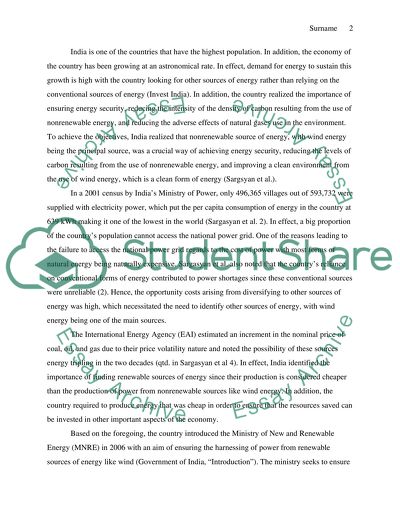Cite this document
(“Wind Energy in India Essay Example | Topics and Well Written Essays - 1000 words”, n.d.)
Wind Energy in India Essay Example | Topics and Well Written Essays - 1000 words. Retrieved from https://studentshare.org/physics/1460779-wind-energy-in-india
Wind Energy in India Essay Example | Topics and Well Written Essays - 1000 words. Retrieved from https://studentshare.org/physics/1460779-wind-energy-in-india
(Wind Energy in India Essay Example | Topics and Well Written Essays - 1000 Words)
Wind Energy in India Essay Example | Topics and Well Written Essays - 1000 Words. https://studentshare.org/physics/1460779-wind-energy-in-india.
Wind Energy in India Essay Example | Topics and Well Written Essays - 1000 Words. https://studentshare.org/physics/1460779-wind-energy-in-india.
“Wind Energy in India Essay Example | Topics and Well Written Essays - 1000 Words”, n.d. https://studentshare.org/physics/1460779-wind-energy-in-india.


